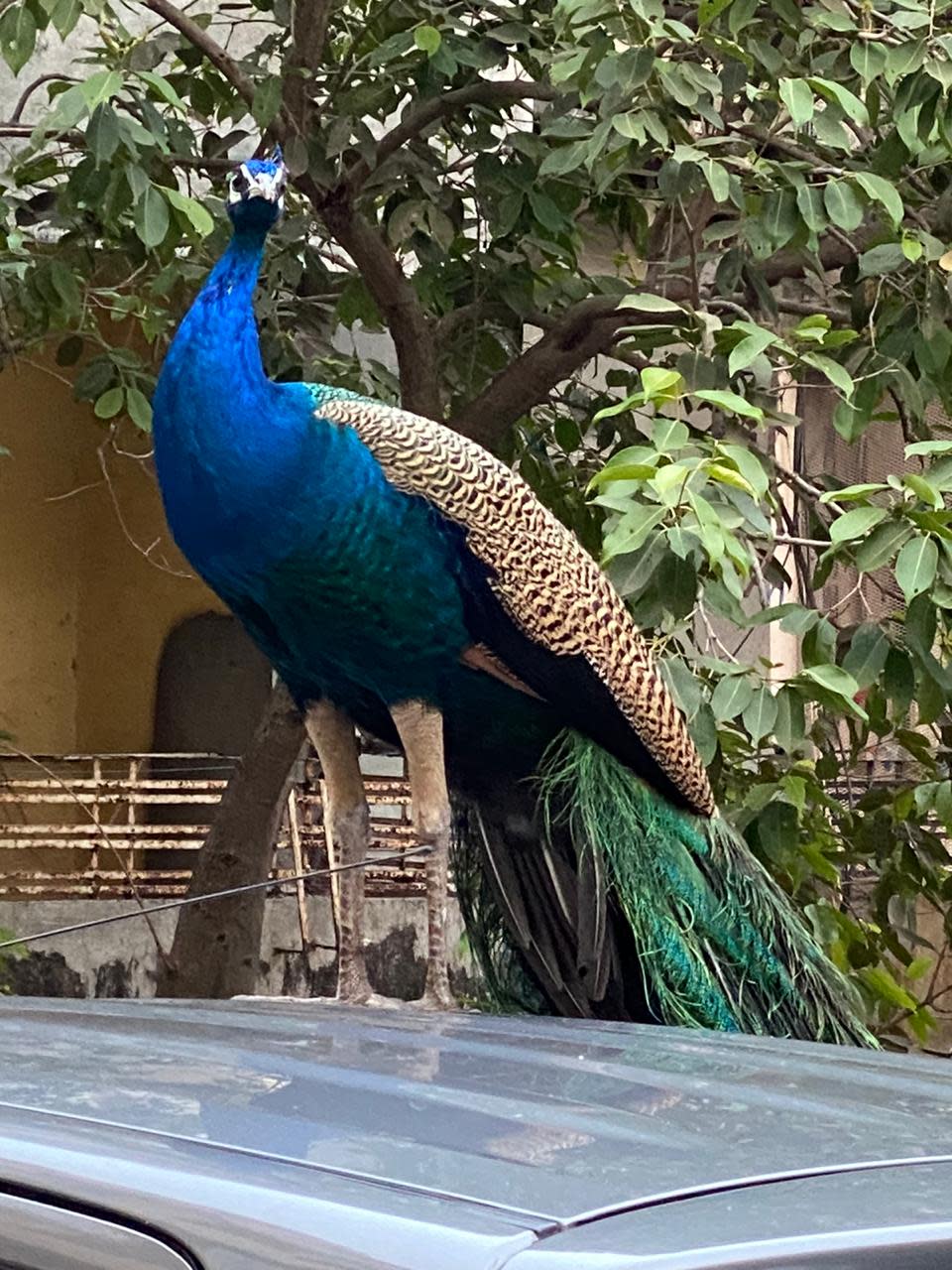Lockdown effect: Why are we seeing peacocks in Mumbai and from where did they come?
A series of pictures and a video going viral features peacocks in a housing colony in bustling south Mumbai as the city and country remains under lockdown.

Unless you’ve been living under a rock, there’s a possibility that you’ve seen the video of an ostentation of peacocks wandering about a housing colony in Mumbai. This is just one of the many videos from around India and the world showing nature taking over locked-down cities. Whether it’s a heard of deer in Zakopane, Malabar Civet taking a stroll on in the heart of Calicut, Coyotes on the streets of San Francisco or indeed nilgais on the streets of Noida – nature does have a way of taking over, if only we allow it to.
The latest in this series is this video of an ostentation of peacocks taking over a housing colony in Mumbai. Located in south Mumbai, Khareghat Colony is one of the oldest community residential complexes in the city. It was built in 1912 as a shelter for the lesser-privileged Parsis on what was then the outskirts of the city. Today, that location is at the heart of tony South Mumbai with the neighbourhood commanding exorbitant real estate rates. In fact, Khareghat Colony doesn’t stand very far away from Mukesh Ambani’s billion-dollar home, Antilia.
Khareghat Colony is also home to the Alpaiwalla Museum that has curated arts and antiquities related to the Zoroastrian community. The museum is under renovation and is temporarily shut. Also within the premises of Khareghat Colony is a war memorial dedicated to the Zoroastrian Parsis who died in the line of duty in World War I. Latter-day additions include Parsis who died in action during World War II, the two Indo-Pakistan Wars of 1965 and 1971 and Indo China War of 1962.

But how did the peacocks appear in this colony that’s sees non-stop traffic 24/7, horns blaring all the time? As it turns out the peacocks don’t live in Khareghat Colony, they made their way down the hill from a forest nearby. That’s quite right; there’s a lush green forest in the heart of Mumbai and you probably pass it every single day without once realising it.
What is today one of the most bustling neighbourhoods of the city was once a no-go zone for most people. As late as 1822 you could’ve spotted tigers in this neighbourhood. Of course, as time went by and humans took over the forests, animals and birds retreated. The green cover all but vanished, except for one small patch right on top of the hill behind Khareghat Colony.
The forest in the heart of Mumbai

Welcome to Doongerwadi, a lush green forest that stands on top of the tony Malabar Hill. This 54 acre forest remains out of bound for general public because inside it is private property, belonging to the Bombay Parsi Punchayet that houses the Zoroastrian funerary towers. Of the three hollow towers, only one remains functional.
According to Zoroastrian beliefs, the moral remains aren’t cremated or burnt. The bodies of the deceased are placed inside this hollow tower and exposed to scavenger birds. Over the years, with the fall in the number of vultures, the community has had to embrace other ways to dispose of its dead. Among this is the installation of solar panels that are supposed to hasten the decomposition.
The forest that hugs these towers is home to a wide range of flora and fauna. Even to this day, it isn’t unusual to hear a peacock’s mating call or indeed see a few walking along the pathways within the forest. In fact, old residents of Khareghat Colony will probably tell you of a time when the peacocks would make their way into the residential colony but with rampant development in the neighbourhood the birds tend to stay within the confines of the forest. Until, of course, the humans retreated into their homes and the peacocks came out to play.


